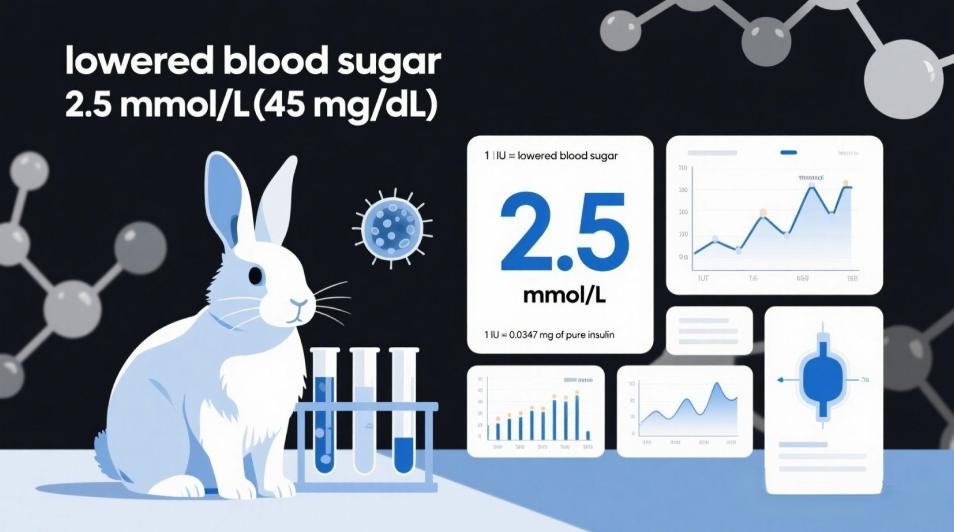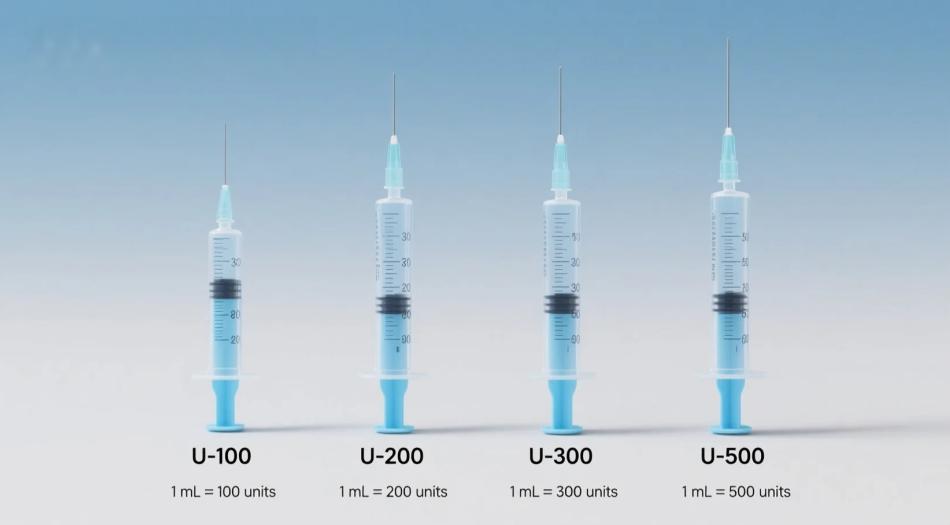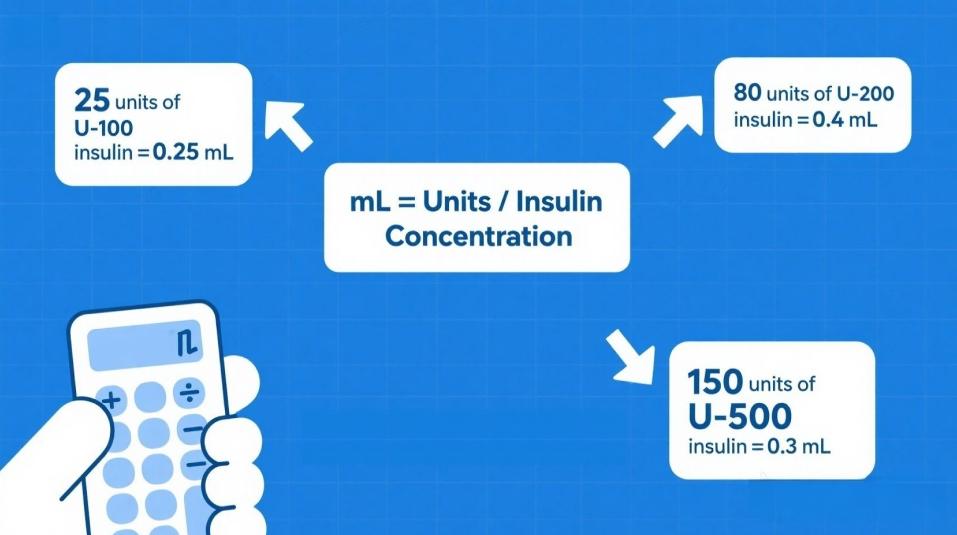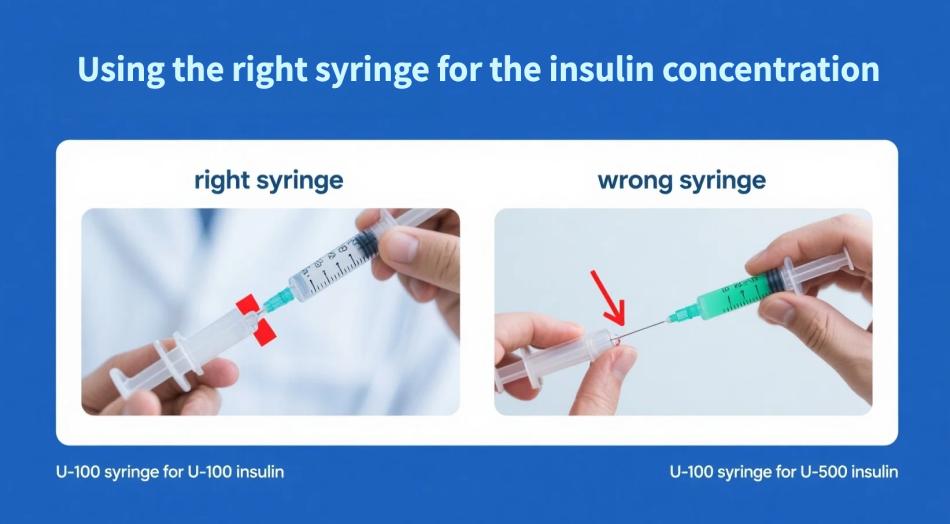
Understanding how to convert insulin units to mL is very important for people living with diabetes. A small miscalculation in insulin dosage may cause serious health risks, including hypoglycemia or hyperglycemia.
We’ll explain everything in a straightforward manner in this article. You will find out how insulin is measured, how different concentrations affect your dosage, and how to safely perform units to mL and ml to unit conversions.
Table of Content
- What Does “Units” Mean in Insulin?
- Why Understanding Insulin Unit Conversion Is So Important?
- Common Insulin Concentrations
- How to Convert Insulin Units to mL?
- How to Convert mL to Units?
- Common Mistakes to Avoid
- Safe Practice Tips
- Helpful Tools
- FAQs About Insulin Units and mL
🧬 What Does “Units” Mean in Insulin?
When insulin was first discovered in 1921, scientists didn’t have the tools we have today to precisely measure how much insulin was in a dose using milligrams or milliliters. Instead of measuring its weight or volume, they decided to define insulin dosage based on its effect on the body.
So, they created a special unit just for insulin — called the international unit (IU). One international unit of insulin was defined as the amount needed to lower the blood sugar level of a fasting laboratory rabbit by 2.5 mmol/L, which is equal to 45 mg/dL. In other words, they measured insulin by how much it lowered blood sugar, not by how much it weighed.

Today, with modern scientific tools, we now know that one international unit equals 0.0347 milligrams of pure insulin in crystal form. But even with this precise number, we still use the international unit (IU) system — because it’s much simpler and more practical for calculating insulin doses. Using “0.0347 mg” for every dose would be confusing and hard to work with, especially for patients and healthcare providers.
🔍 Why Understanding Insulin Unit Conversion Is So Important
When using insulin, the number of “units” tells you how much of the active drug you’re getting. But the volume of insulin (measured in milliliters or mL) you inject can vary a lot depending on the type of insulin concentration you’re using. This can be confusing — and dangerous — if misunderstood.
Let’s break it down with an example:
- If you’re using U-100 insulin (which means 100 units per 1 mL of fluid), and you inject 50 units, you’re putting 0.5 mL of fluid into your body.
- Now imagine you’re using U-500 insulin, which is much more concentrated — it contains 500 units in 1 mL. To get the same 50 units, you only need to inject 0.1 mL of fluid.
Even though both injections deliver the same amount of insulin in terms of units (50 units), the amount of liquid being injected is very different. If someone mistakenly uses the U-100 volume (0.5 mL) with U-500 insulin, they would end up injecting five times too much insulin — which could lead to severe hypoglycemia, seizures, or even death.
That’s why knowing how to convert units to milliliters (and vice versa) isn’t just a technical detail — it’s a critical safety issue. Doctors, pharmacists, and patients all need to be aware of the insulin concentration they’re using and make sure their syringes, pens, or pumps are correctly matched.
Using the wrong volume for the wrong concentration can result in serious health risks. Clear communication and proper education about unit conversion can literally save lives.
🧪 Common Insulin Concentrations

When you use insulin, it’s important to understand not just how many units you’re taking, but also how concentrated your insulin is. The concentration tells you how many units of insulin are in each milliliter (mL) of liquid — and this affects how much fluid you inject.
Here are the most common insulin concentrations used today:
1. U-100 Insulin (100 units per mL)
- Most common insulin strength used in the U.S. and worldwide
- 1 mL = 100 units of insulin
- Standard for insulin pens, syringes, and pumps
- Most insulin brands (like Humalog, Novolog, Lantus) are available in this form
- Example: Injecting 30 units = 0.3 mL
✅ If you’re not sure what you’re using, it’s most likely U-100.
2. U-200 Insulin (200 units per mL)
- More concentrated than U-100
- 1 mL = 200 units
- Often found in insulin pens (e.g., Humalog U-200 KwikPen)
- Useful for people who need larger doses but want to inject less volume
- Example: 60 units = 0.3 mL
🖋️ U-200 insulin pens automatically adjust dosing so you don’t have to calculate volume.
3. U-300 Insulin (300 units per mL)
- Long-acting insulin with high concentration
- 1 mL = 300 units
- Commonly used for basal insulin like Toujeo
- Provides smoother and longer glucose control
- Example: 90 units = 0.3 mL
🕒 Designed to last up to 36 hours — good for people needing round-the-clock control.
4. U-500 Insulin (500 units per mL)
- Very concentrated: 5× stronger than U-100
- 1 mL = 500 units
- Used for people with severe insulin resistance who require large doses
- Typically prescribed when patients need >200 units/day
- Example: 100 units = just 0.2 mL
⚠️ U-500 is powerful and requires special syringes or pen devices. Dose errors can be dangerous.
📌 Important: Always check your prescription label and confirm the U-value of your insulin before performing any conversion.
🔢 How to Convert Insulin Units to mL

Different types of insulin come in different concentrations, which means the number of insulin units contained in every 1 milliliter (mL) of liquid can vary.
To figure out how many mL you need to inject, you can use this simple formula:
mL = Units ÷ Insulin Concentration
Here’s what each part means:
- Units = the dose your doctor tells you to take (like 25 units)
- Insulin concentration = how many units are in 1 mL of your insulin (like U-100 = 100 units/mL)
Let’s look at a few examples:
1. You need 25 units of U-100 insulin:
- U-100 means 100 units per mL
- So: 25 ÷ 100 = 0.25 mL
- ✅ You should inject 0.25 mL of insulin
2. You need 80 units of U-200 insulin:
- U-200 means 200 units per mL
- So: 80 ÷ 200 = 0.4 mL
- ✅ You should inject 0.4 mL
3. You need 150 units of U-500 insulin:
- U-500 means 500 units per mL
- So: 150 ÷ 500 = 0.3 mL
- ✅ You should inject 0.3 mL
🔁 How to Convert mL to Units
Sometimes, your insulin dose might be given in milliliters (mL) instead of units — especially in hospitals or when using insulin pumps. In this case, you’ll need to convert mL into units to know how much insulin you’re really getting.
✅ Here’s the formula:
What the formula means:
- mL = the amount of insulin liquid you’re injecting
- Insulin concentration = how many units are in 1 mL (check the label: U-100 = 100 units/mL, U-200 = 200 units/mL, etc.)
- Units = the actual amount of insulin your body will receive
Let’s look at some examples:
1. You inject 0.4 mL of U-100 insulin
- U-100 means 100 units in every 1 mL
- Calculation: 0.4 × 100 = 40 units
- ✅ You’re getting 40 units of insulin
2. You inject 0.25 mL of U-200 insulin
- U-200 = 200 units per mL
- Calculation: 0.25 × 200 = 50 units
- ✅ You’re getting 50 units of insulin
3. You inject 0.2 mL of U-500 insulin
- U-500 = 500 units per mL
- Calculation: 0.2 × 500 = 100 units
- ✅ You’re getting 100 units of insulin
⚠️ Common Mistakes to Avoid

- Using the wrong syringe for the insulin concentration
Always use a U-100 syringe for U-100 insulin. U-500 insulin requires special syringes or dosing instructions. - Assuming all insulins have the same concentration
Especially dangerous when switching brands or types (e.g., from a U-100 vial to a U-300 pen). - Guessing conversions
Always calculate carefully or use a validated conversion chart/app. - Not storing insulin properly
Temperature affects insulin’s potency. Check out our insulin storage guide for tips from the CDC.
🔐 Safe Practice Tips
✅ Use the right syringe: U-100 syringes are marked in units, so you don’t need to convert manually.
✅ Know your insulin type: Never assume all insulins are U-100.
✅ Ask your pharmacist: When in doubt, consult a medical professional.
✅ Label your devices: Especially if you’re using multiple insulin types (e.g., U-100 and U-500).
🧰 Helpful Tools
- Smart pens and digital insulin pumps may auto-convert for you.
- Insulin unit conversion charts: Print one out and keep it handy.
- Mobile apps like MySugr and Glooko often include units-to-mL calculators.
🙋♂️ FAQs About Insulin Units and mL
Q1: Is 1 unit of insulin always the same amount in mL?
Not necessarily. It depends on the concentration. In U-100, 1 unit = 0.01 mL. In U-500, 1 unit = 0.002 mL.
Q2: Can I mix different insulin types in the same syringe?
Only if prescribed and trained by your doctor. Never mix insulins with different concentrations on your own.
Q3: What’s the easiest way to avoid conversion errors?
Use insulin pens with built-in dose selectors and always double-check your units before injecting.
Final Thoughts: Precision Saves Lives
Understanding insulin units to mL is more than just math—it’s about safety, accuracy, and confidence in your treatment. Whether you’re using U-100, U-500, or another form, the right knowledge can help you avoid serious dosing mistakes and keep your diabetes well-managed.
Always consult your doctor or pharmacist if you’re unsure about the conversion of units to mL or switching insulin products. And remember: it’s okay to ask questions—your health comes first.
Leave a Comment